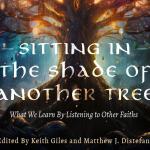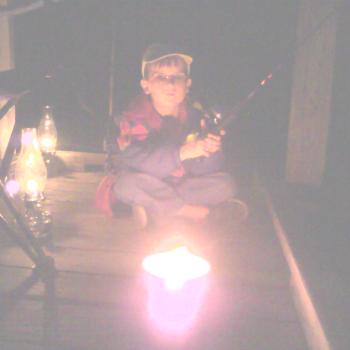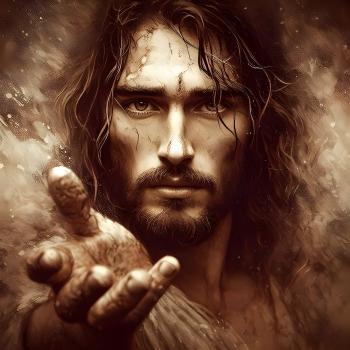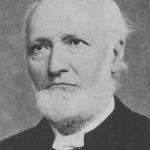“What’s Canadian Thanksgiving aboot?” my American friends ask, emphasizing the final word. Here’s why I’m thankful to be an American in Canada.
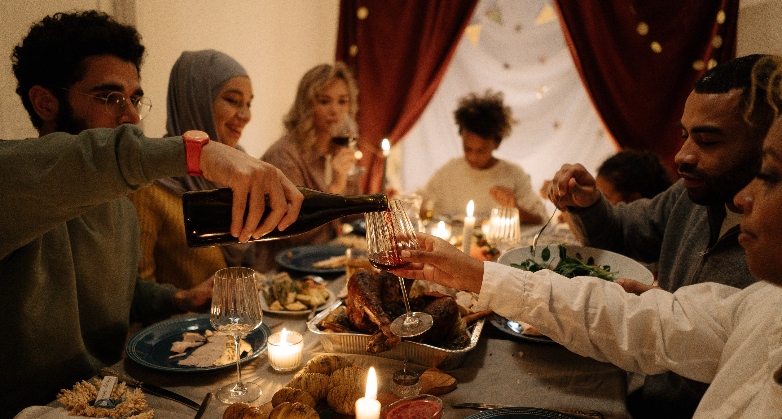
I’m a Southern American, born and bred. I like biscuits and gravy, country ham, and sweet tea. I don’t “sit” on the front porch—I “set” on it. Though my speech isn’t thick with honeysuckle nectar, one of my kids describes her accent as “cornbread.” I grew up in a Baptist (pronounced “Babdist”) church. As a patriotic US soldier, my dad flew the Stars and Stripes on a pole at my boyhood home. They don’t get more American than me.
Addressing Stereotypes of Canada
And then I married a Canadian and moved to the Great White North. I love the United States, but I also love my new home. I have permanent residency now, but I plan to eventually get dual citizenship. My American friends often ask me questions about Canada that demonstrate that their knowledge is based on stereotypes of this great country. To address some of these, I asked my Ottawa-raised wife Christina for help.
Canadian English
First, she said, “Canadians don’t say aboot!” And she’s right. I was nervous about giving this article its title and also keeping my marriage intact. But she assured me I didn’t have to worry about our marriage—I just needed to get some blankets for the Chesterfield (couch). Many Canucks actually get offended at this American stereotype of their speech. It’s not aboot. (But to my American ears, it does sound more like aboat.)
Canadians definitely do say, “Eh?” Just as much as I say, “Y’all.” Though, I’ve noticed that sometimes “eh” gets changed to “hey.” I haven’t figured out the grammatical rule for this—but there must be one, eh?
Canadian spelling of certain words is different than the American spelling. That’s because Canadians follow the British rule for words that Americans spell with an “or” such as “honour,” “valour,” “colour,” and “neighbor.” They also follow the British spelling rule for some words that Americans spell with an “er” such as “kilometre, litre, and centre.”
Canadian Money
Americans traveling for their first time in Canada might be surprised to find out that there is no one-dollar bill. Instead, it’s a coin. Because of the loon on the tails side, they call it a “Loonie.” The two-dollar coin has a bear on the back, but it’s not called a “Grizzly.” They call it a “Toonie” because it’s two-loonies.
Canadian Beverages
Canada loves its beverages, both hot and cold. For example, if you go to Tim Horton’s and order a coffee, you should make it a “double-double,” if you like it with two creams and two sugars. Like many in the US north, “soda” is called “pop.” But if you want a different kind of cold one, you’ve got to know how to ask. They’ll look at you funny if you ask for a twenty-four pack of beer. Instead, tell them you want a “two-four.” And if you want a small bottle (375 ml) of liquor, ask for a “Mickey.”
Canadian Measurements
This leads me to point out that Canadians use the metric system more than Americans do. You might drive a few kilometres to the grocery store. There, you’ll get your deli meat in grams, and your pop in litres. When I bought my car up here, I had to learn to gauge fuel economy in litres per hundred kilometres, rather than miles per gallon. But not everything is metric. Just like the US uses a mix of metric and imperial, you’ll still find some old-style measurements like Timmy’s donuts in dozens, or human weight measured in pounds.
Canadian Sports
During certain seasons, curling is always on a Mom and Dad Moore’s house (rhymes with “dose”). Canadians are serious about their winter sports like hockey and curling. They also love their cold-weather activities like cross-country and downhill skiing, snowshoeing, and ice skating. Yet, it’s not always winter. Because the summers are shorter, it seems like Canadians appreciate them more. I’d never seen RVs in so many driveways before I moved up here! Canadians love the great outdoors and take advantage of the beautiful scenery as much as they can.
Canadian Food
Canada is known for several restaurant chains that originated in Canada, such as Tim Horton’s, Swiss Chalet, Earls Kitchen and Bar, and White Spot. Canadians eat a lot of stick-to-your-ribs foods. Christina says, “That’s because we try to bulk up for the winter.” But it’s not all poutine and BeaverTails. When you travel from the US to Canada, you’ll notice tons of candies that we don’t have, south-of-the-border. You’ll have to try Coffee Crisp, Caramilk, Aero chocolate bars, and Kinder Surprise Eggs. Smarties in Canada are different from Smarties in the US. Canadian Smarties are colorful candy-coated chocolates, like big M&Ms (but much better). Canadians call American Smarties, “Rockets.” If you want to try a distinctively Canadian bag of potato chips, try ketchup chips and all-dressed chips.
What’s Canadian Thanksgiving Aboot?
Talking about food brings me to the topic of Canadian Thanksgiving. When Americans ask me about it, I giggle, because up here we don’t call it “Canadian Thanksgiving.” It’s just Thanksgiving! It’s similar to the way our neighbours in the States celebrate their Thanksgiving, only without the Macy’s parade. In the US, Thanksgiving is the fourth Thursday in November; in Canada, it’s the second Monday of October. Because it feels like Fall sooner in the north, we can decorate with all the autumn décor sooner than many Americans. For the most part, Thanksgiving in British Columbia is much the same as it was in Virginia, where I grew up.
Many Thanksgiving foods in Canada are the same as they are in the US. Some Canadian distinctives are maple-glazed turkey, maple-glazed carrots, bacon and Brussels sprouts, and turnip fluff. Distinctively Canadian desserts include butter tarts and Nanaimo bars.
There is one major difference between US and Canadian Thanksgiving, that I have noticed. Because there’s a time gap between early October and late December, Canada doesn’t associate Thanksgiving with the beginning of the Advent/Christmas season, the way America does. Most Canadians don’t begin decorating for Christmas until after Remembrance Day, November 11.
History of Canadian Thanksgiving
According to Janaina Da Costa, the relationship between Canada’s Thanksgiving on the second Monday in October and the United States’ Columbus Day / Indigenous People’s Day is coincidental. In “Everything You Need to Know About Canadian Thanksgiving,” she writes:
The first Canadian Thanksgiving was reportedly hosted in 1578 by the English explorer Martin Frobisher in what is now Newfoundland. At the time, Frobisher and his expedition attempted to travel through the Northwest Passage safely. The celebration marked their safe arrival to the New World. That first celebratory meal consisted of a simple but delicious combination of salted beef and mushy peas.
The first few Thanksgiving holidays were intended to thank God for keeping explorers safe as they traveled to the New World. Over time, Canadian Thanksgiving evolved to express gratitude to God for a bountiful Fall harvest. However, the next historic celebration didn’t occur until April 1872, when the holiday was reinstated to celebrate the Prince of Wales’s recovery from a significant illness.
For a while, the Thanksgiving holiday did not have a set date. It moved around all over the calendar, from mid-April to November, before the Canadian government finally settled on the second Monday of October. In 1957, the Canadian Parliament made the holiday official with the following proclamation: A Day of General Thanksgiving to Almighty God for the bountiful harvest with which Canada has been blessed – to be observed on the 2nd Monday in October.
A Culturally Diverse Holiday
This American observes that, like the US, Canada has distanced itself from the specific religious origins of the holiday. For the most part, Thanksgiving has become a secular holiday. In both countries, this is largely due to the increase in diversity. The holidays began when the US and Canada were more culturally homogenous. With the representation of many cultures in contemporary society came less of an emphasis on Judeo-Christian ways of expressing thanksgiving and gratitude. The Pew Research Center shows that Canada is more culturally diverse than the United States.
Diverse Representation
One way that I’ve noticed this higher cultural and religious diversity is in the representation demonstrated in television commercials—especially around the holidays. In the United States, diversity looks like depictions of all races. Often, non-white people are still seen in stereotypical ways. In Canada, television advertising depicts not just people of all races, but people of all cultures. That’s an important distinction! It’s not simply a matter of showing folks with brown faces, as in the US. In Canada, advertisers give glimpses into the homes of people who wear turbans, saris, yarmulkes, or hijabs.
A Place at the Table
Whether you’re Christian, Sikh, Hindu, Jewish, Muslim, Indigenous, or anything else, your religion and your culture are celebrated in Canada. This diversity is something I’m grateful for, as I look toward Thanksgiving in Canada. This is a nation that seeks to overcome stereotypes. No—we usually don’t mind the good-natured ribbing when our American neighbors say, “Sorry, eh!” But we’re serious aboot making sure there’s a place at the table for everyone.




